First, let’s get the burning question out of the way. What makes a meme, a meme?
I here’s a brilliant acronym constructed by Wil Fulton:
M – message
E – evolution
M – malleability
E – effect
And whaddaya know! It spells M.E.M.E!
“Message: There needs to be a clearly definable, central message or reference that’s understood, and relatable by commonly shared knowledge or experience. The medium of the message isn’t relegated to an image and text; it can be either, or both. Or video, or solely audio. Evolution: The meme cannot remain static. It must be adopted and remixed by a community of people that embrace it. Malleability: It must aid in its own evolution by having defined characteristics that can be changed while maintaining and preserving some semblance of the original message. Effect: It has to reach a certain level of popularity and understanding, or the message won’t matter. Perhaps the most important part of the meme is its virality.”
– Wil Fulton
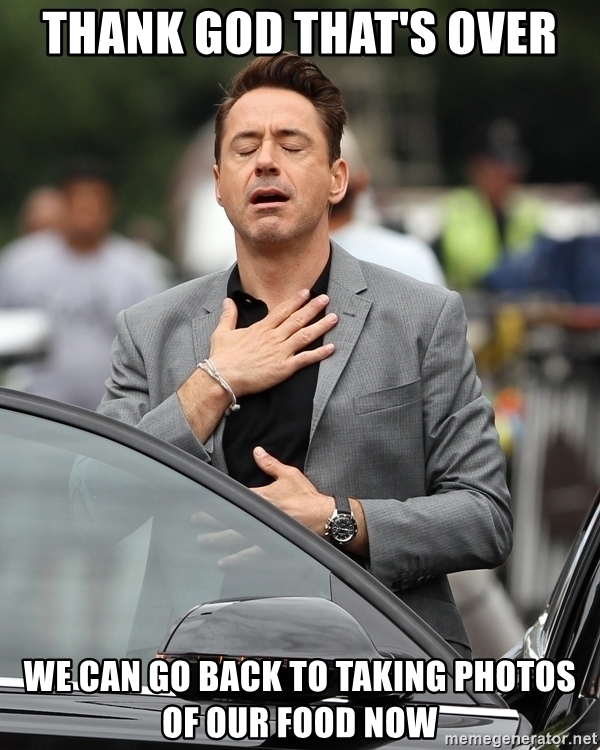
Not yet Robert! First, thank you Mr. Fulton. I couldn’t have explained this better, even if I tried. Now that we have that out of the way, let’s look at the impact memes have on us.

Sorry Robert.
We interact with numerous memes on a daily basis and don’t waste a second sharing them, with large groups of people or single individuals, because of their infectiously relatable quality.
It is a form of communication that is generated and spread so quickly, that it’s hard to keep track of where one originated and what’s old or new. A meme’s ability to convey complex ideas, shared understandings, popular opinions, and states of mind, is far superior to plain words, making it very successful among crowds on social media (which is practically all of us!)
They appeal to our need to be part of a larger group, and simultaneously our desire to be individuals.
Limor Shifman, professor of communication and journalism at the Hebrew University of Jerusalem
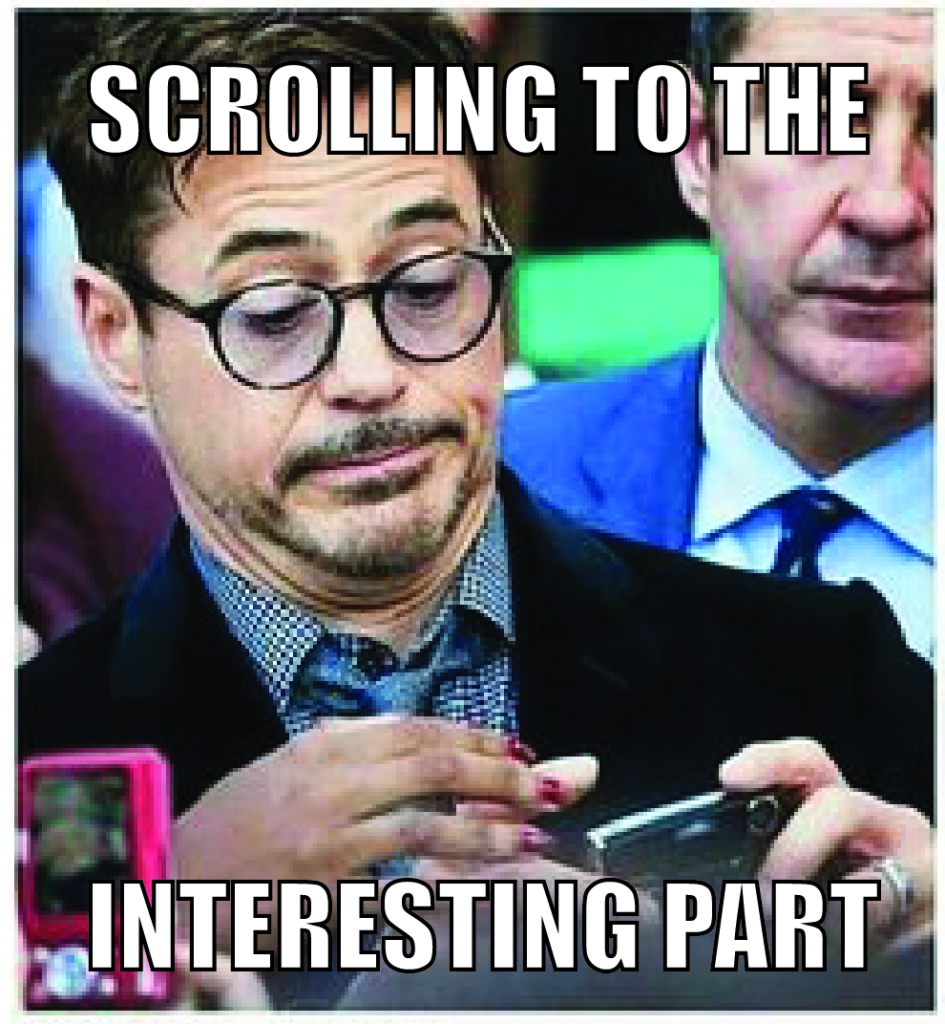
Not cool Robert.
Anyway, I’ve been wondering about the irresistible attention-grabbing nature of memes. An article released by the faculty of Economics and Communications at BINUS University, reveals that the tendency to replicate or forward a meme on the internet is not always
directly proportional with the agreement to the issues being brought to the front.
Visual content solutions provider Olapic has published a survey that evaluates the motivational and emotional responses that drive Americans to share on social media. Its findings include that 40% of Americans (aged between 16 to 44) post memes so their friends will interact with them on their social media profiles.
The need to leave footprints in social media by retweeting or re-pathing memes override other reasons. Updating a status, even just forwarding memes, is important to stay updated and maintain existence.
Journal Humaniora
Now that we’ve established the availability and shareability of memes, let’s take a closer look at the content that these pieces of cultural phenomenon encapsulate. If no one out there controls or filters these memes, how easy is it for a quintessential, harmless, laughable meme to carry a message that isn’t necessarily as ‘haha’ for some people as others?
In “The Role of Memes in Teen Culture,” Jennifer L.W. Fink writes from the point of view of a concerned parent watching her sons react to humorous memes about serious news. She talks about how humor is often used as a coping mechanism for teenagers as well as adults.
When I learned (on Facebook) that an American drone attack killed Maj. Gen. Qassim Suleimani, the powerful Iranian commander, my stomach dropped. Having been married to a Marine deployed in the gulf war in the 1990s, I know that war is no joke. Our sons came home from school that day laughing at World War III memes claiming their generation is ready for war because they’ve been “training” in the video games Fortnite and Call of Duty.
Jennifer L.W. Finks

Yikes indeed.
Question is, if memes are a strong medium through with information can be absorbed and spread, and their potentiality of becoming ‘viral’ is known, understood and researched upon, why aren’t they being exploited to promote healthier content? Now, I know that ‘healthy’ can be subjective, and there are varying priorities across the globe, but one can give it a go.
Unlike World War III memes that emerged in January, it was refreshing to see that coronavirus memes have largely been devoid of alarmism, irony and sarcasm. They’re often straightforwardly informational, using humor in a positive tone. The overarching theme of the memes is that, even amid a worldwide health crisis, it’s possible to properly prepare and take health precautions, which seems like a unique and encouraging contrast from the usual insensitive jokester approach.
For example,
Vietnamese officials took a popular 2017 pop song “Ghen” and evolved it into a catchy informative music video, titled “Gen Cho Vy,” a pun on “coronavirus”. Take a look:
Because of the embedded message and of course catchy music, a Tik Tok dance challenge was born. The song’s usage evolved, and because of the malleable quality of the Tik Tok challenge, more people jumped on the band wagon and re-created the video in their own way, creating a ripple effect. Thus, a new meme came to life! (see what I did there)
As they say, this is some ‘wholesome’ content!
Here are some of my attempts at creating culturally relevant content on subjects that I feel strongly need addressing. These can’t be categorized as memes until their effect is measured. Take a look:

The first variation of this potential meme, shines light on the South Asian mind-set where being light-skinned and smaller-framed is directly proportional to the speed of attaining a life partner. The older woman in the image is actress, Samina Ahmed, who is currently starring in a Pakistani drama series called ‘Kashf’. I used her image due to the popularity of the show in the country, and due to the damaging patriarchal ideologies her character portrays.
The potential meme, perhaps, could be enhanced in its message if the second ‘success story’ also depicted a ‘Desi’ couple instead of Oprah Winfrey. There is also an underlying notion of success that is only gained if someone ‘pasands’ (likes) you, and chooses to have you as part of their life. This was unsettling, so I decided to construct another meme using characters from the same show.
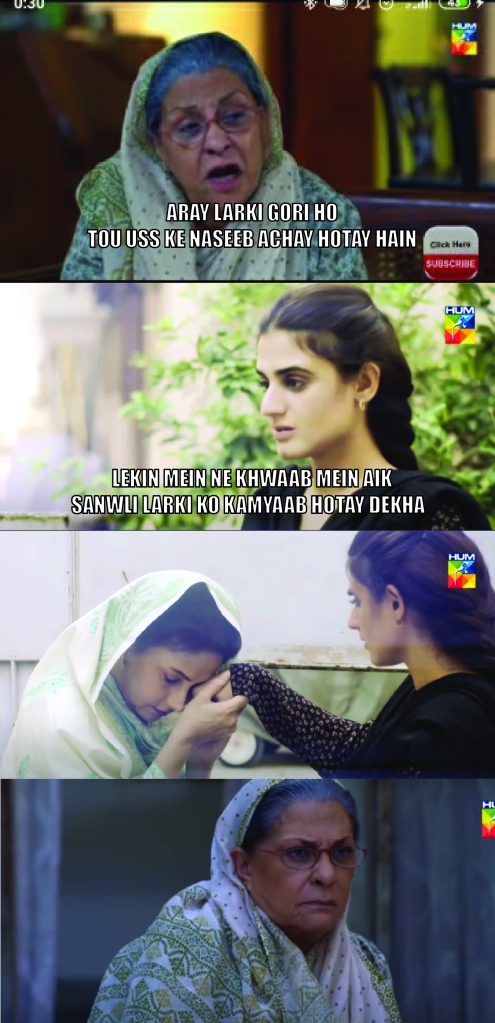
Here’s a variation that isn’t concerned with a specific aspect of life where ‘kamyaabi’ (success) is attained, but it does specify that someone ‘sanwli’ (darker-skinned) is involved. This variation may perhaps have a stronger impact due to a cultural and religious belief system that revolves around God’s blessings, such as the gift of foresight, being bestowed upon individuals that are pious.
Here’s the con. The meme might have a hard time being understood because not everyone is aware of the character of Kashf or the plot of the drama serial; Kashf foresees future occurrences in her dreams, that turn true multiple times during the course of the show.
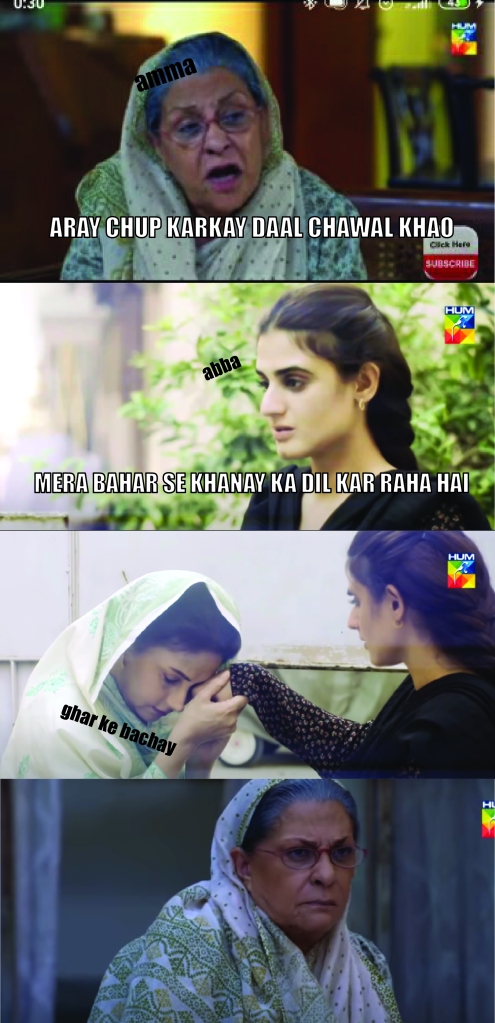
The meme above is just a humorous way use the same format with a different message. That made me wonder; What if I took the strongest, most relatable visual from these memes and used just one instead of using a series of images? And so I made this:

This experimentation can go on and on. Not to mention, I haven’t delved into the medium of videos yet!
All in all memes are great. They help put on a smile on your face on a daily basis. I just hope that meme-makers take a more conscientious approach towards the message they spread and how they spread it, and hope they’re aware that all the content they produce is being looked at, heard and shared more than they know.
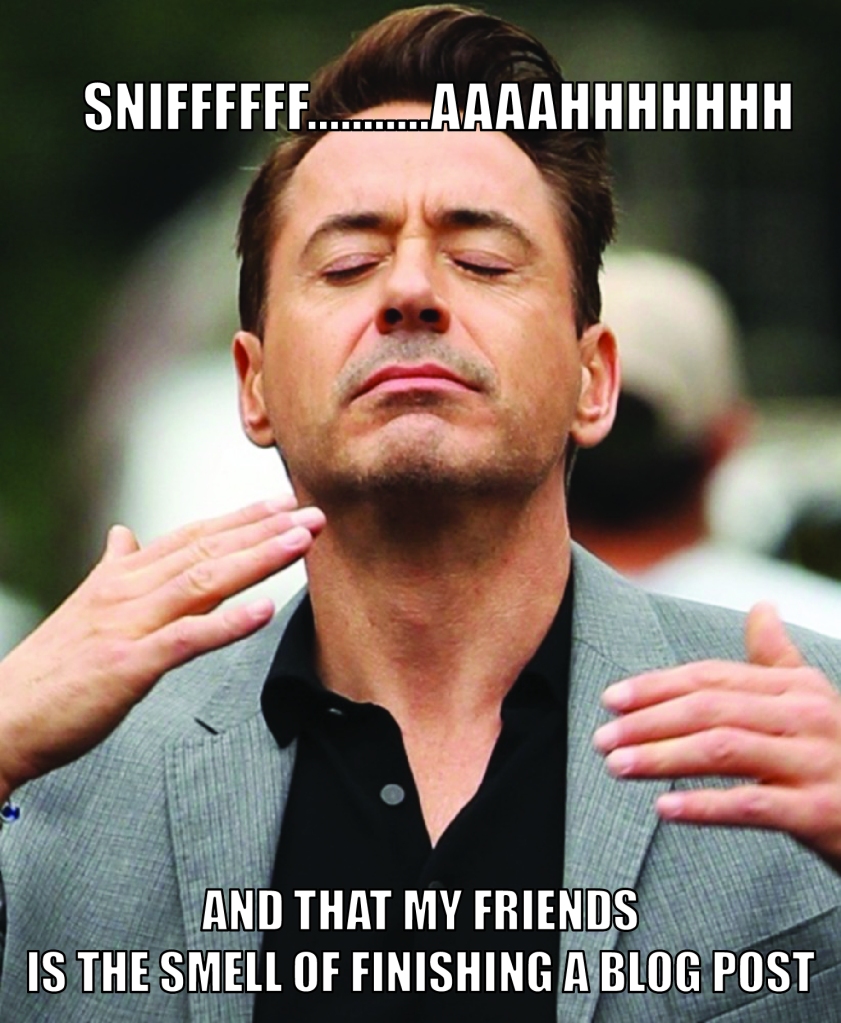
Goodbye Robert.

